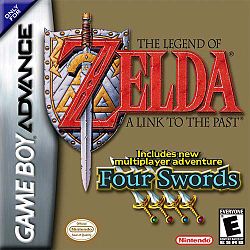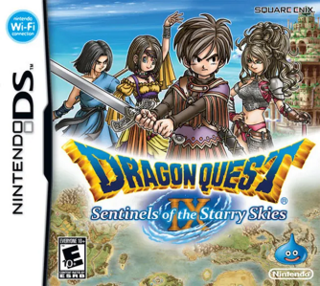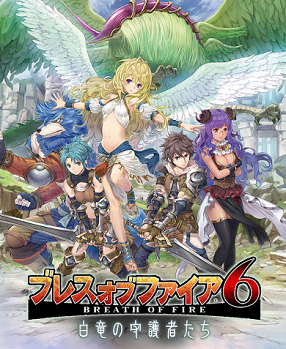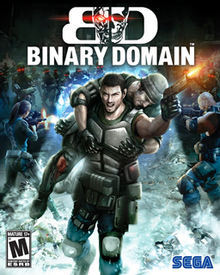
F-Zero GX is a 2003 racing video game developed by Amusement Vision and published by Nintendo for the GameCube console. It runs on an enhanced version of the engine used in Super Monkey Ball. F-Zero AX, the arcade counterpart of GX, uses the Triforce arcade system board conceived from a business alliance between Nintendo, Namco and Sega. Published by Sega, it was released alongside GX in 2003.

Daytona USA is an arcade racing game developed by Sega AM2 and released by Sega in March of 1994. Inspired by the popularity of the NASCAR motor racing series in the US, the game has players race stock cars on one of three courses. It was the first game to be released on the Sega Model 2 arcade system board. Daytona USA is one of the highest-grossing arcade games of all time.

Sega AM Research & Development No. 2, previously known as SEGA-AM2 Co., Ltd., is a video game development team within the Japanese multinational video game developer Sega. Yu Suzuki, who had previously developed arcade games for Sega including Hang-On and Out Run, was the first manager of the department.

Toshihiro Nagoshi is a Japanese video game producer, director and designer. He was the chief creative officer for Sega until 2021 when he became creative director. He went on to be the general director of Ryu Ga Gotoku Studio, and later became a member of the board of directors for Atlus. He joined Sega in 1989. After 30 years in the company, Nagoshi left Sega to join NetEase in late 2021, where he founded the studio Nagoshi Studio.
Shippū! Iron Leaguer is an anime television series produced by Sunrise. Directed by Tetsurō Amino and featuring mecha designs by Kunio Okawara, it premiered on TV Tokyo on April 6, 1993, and ended its run on March 29, 1994, spanning a total of 52 episodes.

The Legend of Zelda: A Link to the Past and Four Swords is a compilation of two action-adventure games co-developed by Nintendo R&D2 and Capcom and published by Nintendo for the Game Boy Advance. The game was released in December 2002 in North America and in March 2003 in Japan and Europe. The cartridge contains a modified port of A Link to the Past, originally released for the Super Nintendo Entertainment System in 1991, and an original multiplayer-only game titled Four Swords, which serves as the 9th installment in The Legend of Zelda series.

Dragon Quest IX: Sentinels of the Starry Skies is a role-playing video game co-developed by Level-5 and Square Enix for the Nintendo DS. Published by Square Enix in Japan in 2009, and by Nintendo overseas in 2010, it is the ninth mainline entry in the Dragon Quest series. The storyline follows the protagonist, a member of the angelic Celestrian race, after a disaster in their home scatters magical fruits across the mortal realm. While carrying over traditional gameplay from the rest of the series with turn-based battles, the game is the first Dragon Quest entry to feature a customizable player character, and the first to include a multiplayer mode, with the option of trading treasure maps and loaning player characters through Nintendo Wi-Fi. Online functions ended in 2014 when it ceased operations.

Tales of Innocence is an action role-playing game, developed and released for the Nintendo DS and PlayStation Vita. Innocence is the ninth main installment in the Tales series, developed by Alfa System and published by Bandai Namco Games. It was released in December 2007. A remake for the Vita developed by 7th Chord, Tales of Innocence R, was released in January 2012. Multiple elements are carried over from previous entries in the series, including the action-based Linear Motion Battle System. Innocence R includes both an updated battle system and additional story content. Both versions remain exclusive to Asia.

This is a list of development studios owned by Sega, a Japanese video game developer and publisher based in Tokyo, Japan. Accompanied with the list is their history of game development. Also included are the companies that Sega has acquired over the years. For a full list of games developed and published by Sega, see List of Sega video games, List of Sega mobile games and List of Sega arcade games.

Yakuza, known in Japan as Ryū ga Gotoku and also known as Like a Dragon in recent series entries to align with its Japanese name, is a video game franchise created, owned and published by Sega. It incorporates elements of the action-adventure, beat 'em up, and role-playing genres.

Sonic Free Riders is a motion controlled racing video game developed by Sonic Team and published by Sega for the Xbox 360. The game requires the use of Microsoft's Kinect peripheral and was a Kinect launch title in November 2010.

Robotics;Notes is a visual novel video game developed by 5pb. It is the third main game in the Science Adventure series, following Chaos;Head and Steins;Gate, and is described by the developers as an "Augmented Science Adventure". The game was originally released by 5pb. in Japan on the PlayStation 3 and Xbox 360 in 2012; the enhanced version Robotics;Notes Elite was released for PlayStation Vita in 2014, and for Nintendo Switch and PlayStation 4 in 2019. An English version of Robotics;Notes Elite was released by Spike Chunsoft in 2020 for Microsoft Windows, Nintendo Switch and PlayStation 4.

Transformers: Fall of Cybertron is a third-person shooter video game based on the Transformers franchise, developed by High Moon Studios and published by Activision. It is the sequel to the 2010 video game Transformers: War for Cybertron, and directly follows the events of that game, as the Autobots struggle to defeat their Decepticon foes in a civil war for their home planet of Cybertron. The game was released on August 21, 2012, in North America and on August 24, 2012, in Europe for Microsoft Windows, PlayStation 3, and Xbox 360. In 2016, it was released for PlayStation 4 and Xbox One on August 8, in Australia and on August 9, in North America. Mercenary Technology developed the game's Windows version, while Fun Labs developed the PlayStation 4 and Xbox One versions.
The Idolmaster is a Japanese media franchise that began in 2005 with a raising simulation and rhythm video game series created by Bandai Namco Entertainment. The series primarily centers on the career of a producer who works with a group of prospective pop idols at the talent agency 765 Production. Originally released as an arcade game, the franchise has grown to numerous ports, sequels and spin-offs across multiple video game consoles, including several social network games. The series includes a variety of other media such as an anime with the same name, printed media, audio dramas, a Korean drama, and radio shows.

Breath of Fire 6: Hakuryū no Shugosha-tachi was a free-to-play online, web-based multiplayer role-playing video game with microtransactions developed and published by Capcom as the sixth main installment of its Breath of Fire series. The game was released in Japan on February 24, 2016 for Microsoft Windows computers and Android devices, with an iOS release following on July 12, 2016. Online operations for the title officially ceased on September 27, 2017.

Judgment is an action-adventure video game developed by Ryu Ga Gotoku Studio and published by Sega. A spin-off to the Like a Dragon series, it was released for the PlayStation 4 in December 2018 in Japan and June 2019, worldwide. A remastered version of the game, with the subtitle Remastered in Japan and Asia, was released for the PlayStation 5, Stadia, and Xbox Series X and Series S in April 2021. A port for Amazon Luna was made available on December 16, 2021. A Windows port was released on 14 September 2022 through Steam. Judgment follows lawyer-turned-detective Takayuki Yagami and his allies as they explore a case involving corpses whose eyes have been removed. The player controls Yagami in the fictional Tokyo district of Kamurocho, where he fights thugs and yakuza while carrying out missions involving chasing, stealth, and searching for clues.

Ryu Ga Gotoku Studio is a video game developer housed within the Japanese video game company Sega as part of its Sega CS Research and Development No. 1 division. It is known for developing the games in the Like a Dragon series, which the studio is named after, since Yakuza 5.

Ryuji Goda, is a fictional character from Sega's action-adventure game Like a Dragon series, previously known as Yakuza outside of Japan, first appearing in 2006's Yakuza 2. Goda also appears as one of the main characters in a spin-off title of the series, Yakuza: Dead Souls, which does not follow the series' canon and is set in an alternate timeline where Goda survives his wounds at the end of Yakuza 2. Goda is voiced by Masami Iwasaki in all media.

LBX: Little Battlers eXperience is an action role-playing video game developed and published by Level-5, and published by Nintendo in Europe and North America. It released for Nintendo 3DS in Japan on July 5, 2012, and in North America on August 21, 2015, Europe on September 4, 2015, and Australia on September 5, 2015. It is the third game in the Little Battlers Experience franchise, and the only one to be officially released in English.




















